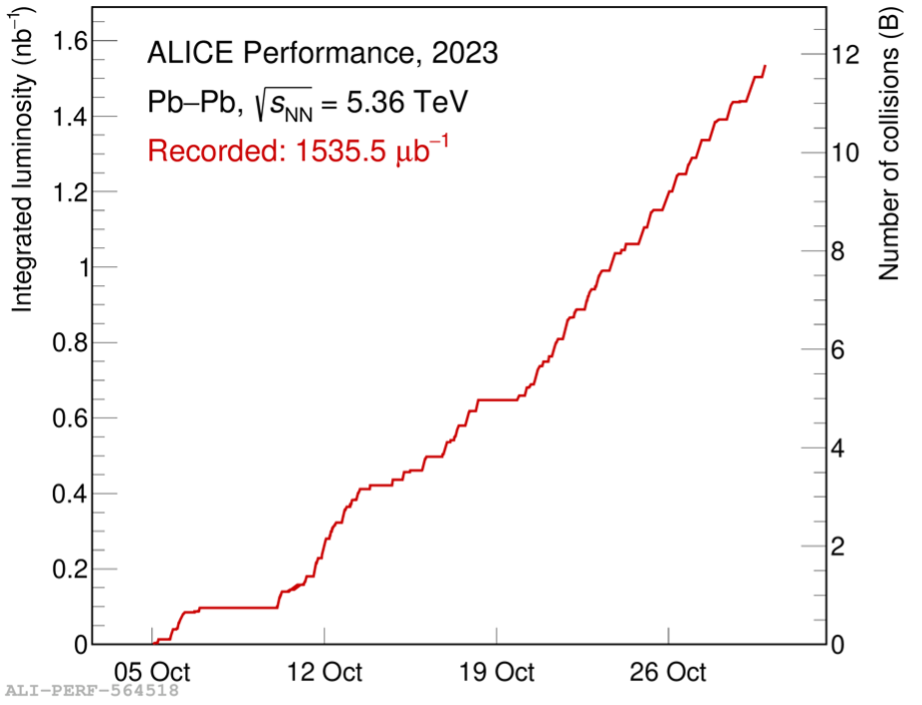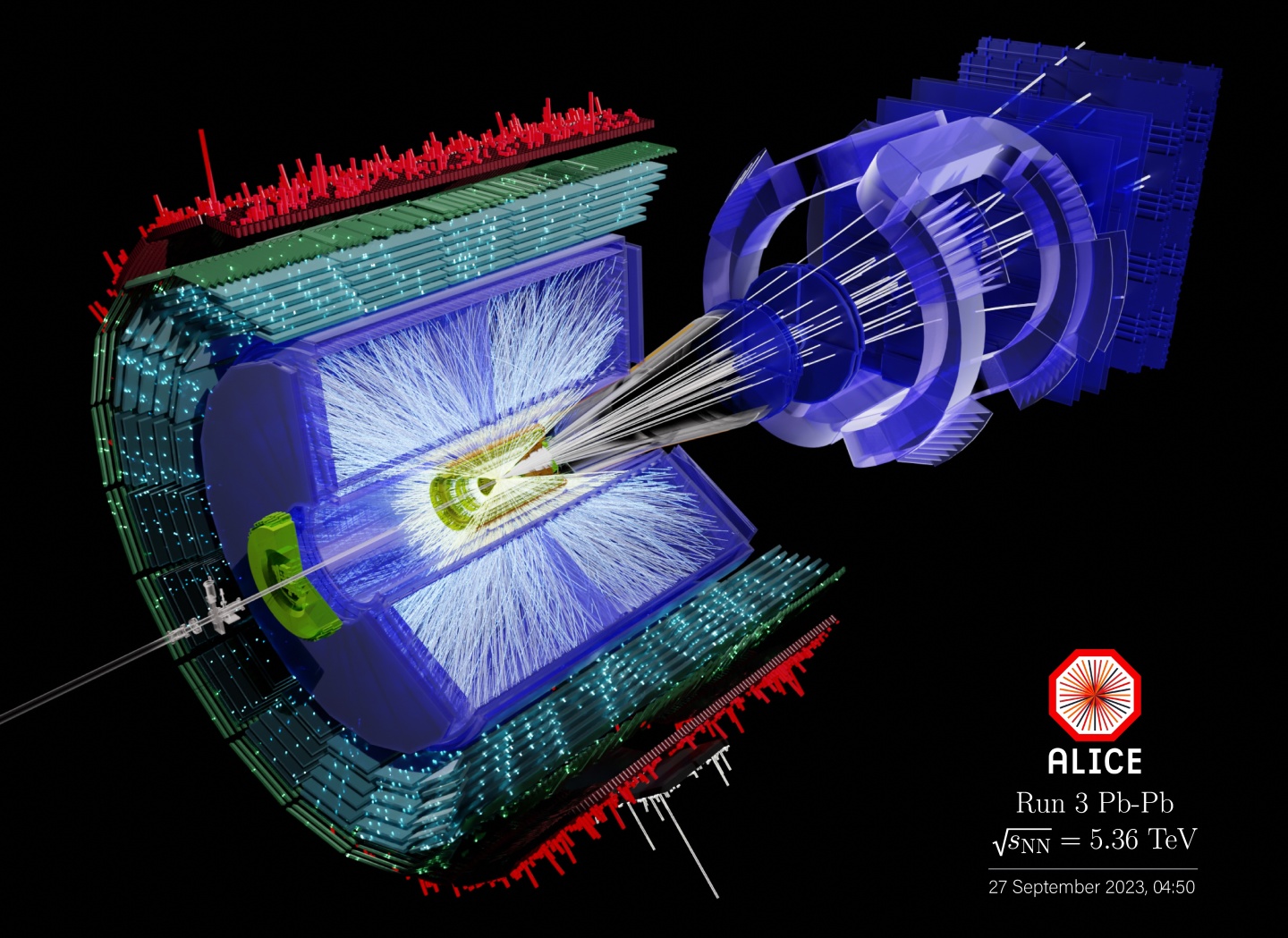After a five-year pause, on the evening of 26 September, lead ions collided at the Large Hadron Collider (LHC) at an unprecedented high energy of 5.36 TeV per pair of nucleons (protons or neutrons) and a collision rate six times higher than before. The final lead-ion beam of this latest heavy-ion run was dumped early in the morning of 30 October, after a forced magnet ‘quench’, carried out to better understand the amount of deposited energy at which the LHC superconducting magnets lose their superconducting state. This improved understanding of the LHC machine will help to further increase the heavy-ion collision rate in the near future.
For this much-anticipated heavy-ion run, alongside improved beam parameters, the ALICE experiment – the LHC’s heavy-ion specialist – made use of its significantly upgraded detector with continuous readout electronics. This means that each and every collision can now be recorded and is thus available for physics analysis, whereas, in the past, only a fraction of collisions could be selected for recording. This continuous readout was achieved by revamping the experiment’s time projection chamber (TPC) detector and upgrading the readout electronics of all of the detectors. In addition, the new inner tracking system (ITS) detector, which is based on highly granular silicon pixel technology, provides sharp images of the collisions with its 10 m2 of active silicon area and nearly 13 billion pixels within the three-dimensional detector volume.
The resulting dramatic increase in the data rate was facilitated by the deployment of a new computing infrastructure for online data processing. This infrastructure includes a new data processing farm that sends the data produced by the experiment directly to CERN’s Data Centre, located about five kilometres from ALICE, through a dedicated high-speed optical-fibre connection that had to be established to cope with the increased data rate.
During the five-week run, ALICE recorded about 12 billion lead–lead collisions – 40 times more collisions than the total recorded by ALICE in the previous periods of heavy-ion data taking, from 2010 to 2018. The new data processing farm, consisting of 2800 graphics processing units (GPUs) and 50 000 central processing unit (CPU) cores, routinely digested collision data at a rate of up to 770 gigabytes per second. It then compressed the data to about 170 gigabytes per second before shipping it to the Data Centre for storage on disk and later, at a limited speed of 20 gigabytes per second, for storage on tape for long-term preservation.
The fresh data set – which amounts to 47.7 petabytes of disk space and is now being analysed – will advance physicists’ understanding of quark–gluon plasma, a state of matter in which quarks and gluons roam around freely for a very short time before forming the composite particles called hadrons that ALICE detects. The increased number of recorded collisions will allow the ALICE researchers to determine the temperature of the plasma using precise measurements of thermal radiation in the form of photons and pairs of electrons and positrons. It will also allow other properties of the nearly-perfect fluid to be measured with greater precision, especially using hadrons containing heavy charm and beauty quarks.


